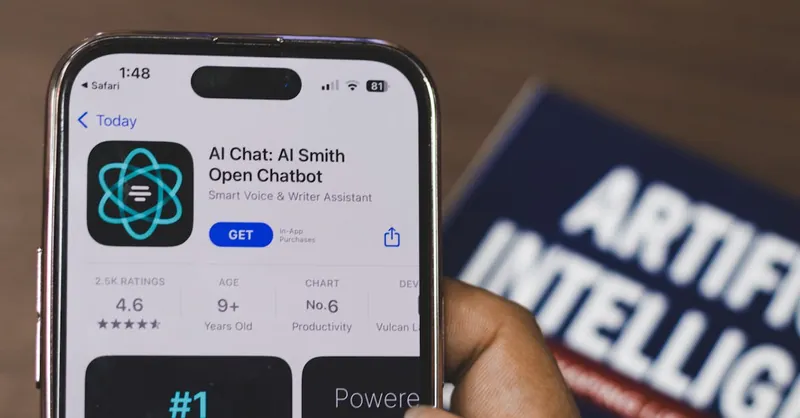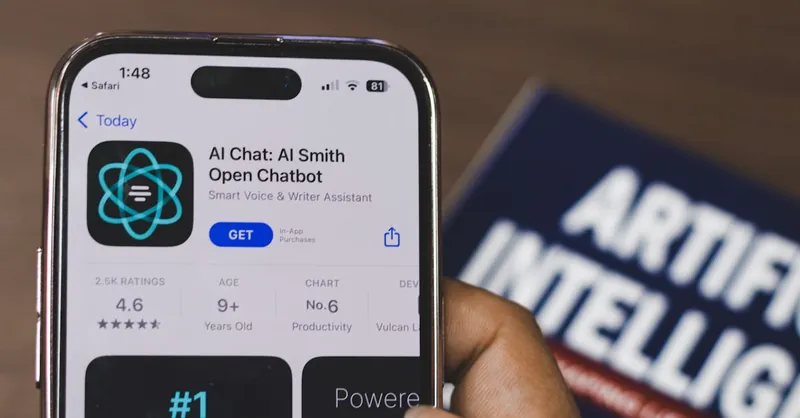Automation for Content Creation: Boost Productivity with AI
Category: Productivity & Automation
Unlock the Power of Automation for Content Creation
If you’re a professional, entrepreneur, or tech enthusiast looking to elevate your content creation process, you’ve likely encountered the challenge of balancing quality with speed. You understand the importance of consistently producing engaging content, yet the time, effort, and resources required often hold you back. You’re searching for smart automation solutions that help you scale without compromising creativity or effectiveness. This post addresses exactly that — how to harness automation for content creation using AI and cutting-edge technology to streamline workflows, improve output quality, and free up your time for strategic tasks.
Unlike generic guides, this article dives deep into practical, actionable strategies specifically tailored for those already familiar with basic content marketing who want to take their process to the next level. We’ll explore the best tools, essential automation techniques, and real-world use cases to inspire your next steps. If you’re tired of juggling tedious tasks or missing deadlines, this comprehensive guide will show you how automation can become your secret weapon to boost productivity and innovation in content creation. Read on to transform your workflow and unlock new opportunities with technology-driven content automation.
- Unlock the Power of Automation for Content Creation
- Understanding Automation in Content Creation: Definition, Benefits, and Why It Matters
- Key Technologies Powering Content Automation
- Popular Automation Tools for Content Creation
- How to Automate Content Research and Ideation: Techniques to Automate Topic Discovery, Trend Analysis, and Keyword Research for Faster Planning
- Automating Content Production: Using AI to Generate Drafts, Optimize SEO, Create Multimedia, and Maintain Brand Voice Consistently
- Streamlining Content Editing and Proofreading: Tools and Methods for Automated Grammar Checking, Style Editing, and Plagiarism Detection
- Distribution and Publishing Automation: Strategies for Scheduling Posts, Multi-Channel Sharing, and Performance Tracking Using Automation Platforms
- Measuring the Impact of Automated Content: Key Metrics and Analytics to Assess Efficiency Gains, Engagement, and ROI
- Best Practices and Common Pitfalls in Content Automation: How to Balance Automation with Human Creativity, Avoid Over-Reliance, and Ensure Quality Control
- Future Trends in Content Automation: Emerging AI Capabilities, Evolving Best Practices, and What to Expect in the Next 5 Years
Understanding Automation in Content Creation: Definition, Benefits, and Why It Matters
Automation in content creation refers to the use of advanced technologies—primarily artificial intelligence, machine learning, and sophisticated software tools—to streamline, optimize, and sometimes entirely generate various content production tasks. These tasks range from ideation and research to drafting, editing, SEO optimization, and distribution. By automating repetitive and time-consuming processes, creators and marketers can focus on strategic, high-value activities like creativity, storytelling, and audience engagement.
The benefits of content automation are multifaceted and critical in today’s rapid digital environment:
- Increased Efficiency: Automation drastically cuts down production time, allowing for faster turnaround without sacrificing quality.
- Scalability: Businesses can scale their content output effortlessly, meeting the ever-growing demands of diverse audiences and platforms.
- Consistency: Automated workflows ensure that content is consistently published on schedule, enhancing brand reliability and audience trust.
- Enhanced Creativity: By removing tedious manual tasks, automation frees up creative energy to craft more engaging, innovative content.
- Data-driven Optimization: AI-powered tools analyze performance metrics in real time, enabling smarter decision-making and continual content refinement.
In an age where digital presence is fiercely competitive and consumer attention spans are shrinking, leveraging automation in content creation is no longer optional—it's essential. It empowers creators and organizations to stay agile, produce high-quality content at scale, and maintain relevance in an ever-evolving online ecosystem. Adopting automation technologies unlocks new possibilities and is a strategic imperative for anyone serious about productivity and impact in content marketing today.

Image courtesy of Sanket Mishra
Key Technologies Powering Content Automation
At the heart of modern content automation lie several transformative technologies that enable intelligent, efficient, and scalable content workflows. Understanding these core technologies helps clarify how automation tools can produce meaningful, high-quality content while reducing manual effort.
Artificial Intelligence (AI)
Artificial Intelligence is the foundational technology behind content automation. AI simulates human intelligence processes, enabling machines to analyze data, understand context, and even generate original content. From chatbots that craft personalized messages to AI models that create entire articles, AI's ability to learn and adapt makes it indispensable for automating content creation at scale.
Natural Language Processing (NLP)
A critical subset of AI, Natural Language Processing (NLP), focuses on the interaction between computers and human language. NLP powers tools that understand syntax, grammar, sentiment, and intent in text, allowing automated systems to generate coherent, context-aware content. Applications include:
- Automated summarization of long texts
- Keyword extraction for SEO optimization
- Sentiment analysis to tailor tone and style
- Machine translation for multi-language content
NLP enhances automation by bridging the gap between raw data and human-readable content, improving accuracy and relevance.
Machine Learning (ML)
Machine Learning teaches systems to improve their performance over time without explicit programming. In content automation, ML algorithms analyze vast datasets—such as past content performance and audience behavior—to predict which types of content will resonate best. This continuous learning enables:
- Dynamic content personalization based on user preferences
- Automated topic generation aligned with trending themes
- Refinement of content strategies through predictive analytics
ML gives automation systems the intelligence to evolve, adapting to changing market needs and audience dynamics.
Automation Platforms and Tools
Alongside AI, NLP, and ML, dedicated automation platforms integrate multiple technologies to streamline end-to-end content workflows. These platforms typically offer:
- Content ideation and research automation
- Automated drafting and editing assistance
- SEO optimization with real-time keyword suggestions
- Multi-channel scheduling and distribution
Popular platforms combine APIs, user-friendly interfaces, and AI-powered modules, empowering marketers and content creators to build robust, scalable automation pipelines without deep technical expertise.
In summary, the fusion of AI, NLP, ML, and specialized automation platforms forms the powerhouse behind today’s content automation revolution. Leveraging these technologies enables creators to produce smarter, faster, and more customized content, unlocking unprecedented productivity and competitive advantage in digital marketing.

Image courtesy of Sanket Mishra
Popular Automation Tools for Content Creation
To fully harness the benefits of automation in content creation, leveraging the right tools is crucial. Leading software solutions utilize advanced AI writing assistants, content schedulers, and design automation tools to streamline various stages of content production, from brainstorming ideas to publishing polished posts. Here’s a closer look at some of the most impactful categories and standout tools that are shaping the future of content marketing automation:
AI Writing Assistants
AI-powered writing tools accelerate content generation by producing drafts, optimizing readability, and providing grammar and style suggestions. These assistants reduce writer’s block and enhance productivity without compromising quality. Popular tools include:
- ChatGPT and GPT-based platforms – Use advanced natural language generation to create articles, blog posts, social media captions, and even email copy tailored to your target audience.
- Jasper AI – Specializes in marketing content generation with templates designed for blogs, ad copy, and product descriptions.
- Writesonic – Offers AI-driven copywriting with SEO optimization features and multi-language support, ideal for scaling content diversity.
Content Scheduling and Distribution Platforms
Automation in content distribution ensures your work reaches audiences consistently across multiple channels, saving time and enhancing engagement metrics. Key platforms include:
- Buffer and Hootsuite – Enable automated scheduling of posts across social media platforms, complete with performance analytics to refine timing and content strategy.
- CoSchedule – Combines content calendar management with automated publishing workflows, integration with SEO tools, and team collaboration features.
- Loomly – Provides AI content suggestions, automated publishing, and approval workflows for streamlined team processes.
Design Automation Tools
Visual content is essential for capturing attention, and design automation tools help non-designers create professional graphics quickly. These tools use AI to suggest layouts, automations for resizing, and template management:
- Canva Pro – Features magic resize, brand kits, and AI-powered design suggestions to accelerate the creation of social media graphics, presentations, and marketing materials.
- Crello (VistaCreate) – Provides templates and AI-driven creative elements that automate repetitive design tasks for faster turnaround.
- Designhill Studio – Offers logo and visual content automation tailored for consistent brand identity.
By integrating these tools into your content workflow, you create a seamless ecosystem that automates everything from writing and editing to publishing and promotion. Combining AI writing assistants, automated scheduling platforms, and design automation solutions optimizes efficiency, enforces consistency across channels, and enables your team to focus on strategic, high-value content initiatives — ultimately amplifying productivity and ROI in your content marketing efforts.

Image courtesy of Walls.io
How to Automate Content Research and Ideation: Techniques to Automate Topic Discovery, Trend Analysis, and Keyword Research for Faster Planning
Efficient content creation begins with comprehensive research and ideation, and automation can significantly accelerate these initial but crucial stages. Leveraging AI-powered tools and automated workflows for topic discovery, trend analysis, and keyword research streamlines your planning process, enabling you to generate relevant, high-impact content ideas consistently and with minimal manual input.
Automating Topic Discovery with AI Tools
Automated topic discovery uses machine learning algorithms to analyze vast amounts of online data, including competitor content, audience interests, and industry news, to suggest content ideas tailored to your niche. Popular AI-driven platforms scan forums, blogs, social media conversations, and search engine queries in real-time, uncovering trending subjects and content gaps that manual research often misses. For instance:
- Content idea generators like BuzzSumo or AnswerThePublic synthesize data from multiple sources to recommend topics your audience is actively searching for.
- AI tools can cluster related topic themes, allowing you to plan comprehensive content pillars that improve SEO authority and audience engagement.
Automating Trend Analysis for Timely Content
Staying ahead in content marketing requires quickly identifying emerging trends. Automated trend analysis tools continuously monitor keywords, hashtags, and social conversations across platforms, alerting you to shifts in audience behavior or industry developments. Techniques include:
- Setting up AI-driven alerts or dashboards that monitor competitor activities and viral topics.
- Utilizing social listening tools that analyze sentiment and volume around trending subjects to gauge their relevance.
- Applying predictive analytics to forecast trend longevity and potential impact, ensuring your content remains topical and impactful.
Streamlining Keyword Research with Automation
Keyword research is vital for SEO success, and automating this task saves hours while enhancing precision. Modern keyword tools integrate AI and machine learning to provide:
- Comprehensive keyword suggestions based on search intent and user behavior patterns rather than just volume metrics.
- Competitor keyword gap analysis, revealing underserved keywords your content can target to capture more organic traffic.
- Automated clustering and prioritization of keywords by difficulty and relevance, helping you to optimize content planning for maximum ROI.
By embedding these automation techniques into your content research and ideation workflow, you drastically reduce planning time while increasing the strategic value of your content. This foundation empowers you to produce data-driven, audience-centric content at scale—giving you a competitive edge in fast-paced digital markets.

Image courtesy of Mikael Blomkvist
Automating Content Production: Using AI to Generate Drafts, Optimize SEO, Create Multimedia, and Maintain Brand Voice Consistently
Once you've streamlined research and ideation, the next crucial phase is automating content production to accelerate creation without sacrificing quality or brand integrity. Thanks to advances in AI-powered technologies, content creators can now efficiently generate drafts, optimize for SEO, develop multimedia assets, and ensure consistent brand voice—transforming lengthy manual workflows into scalable, automated pipelines.
AI-Generated Drafts: Speed Meets Quality
Automated drafting tools leverage natural language generation (NLG) models that produce coherent, relevant, and well-structured content based on inputs like topic keywords, outlines, or desired tone. This technology helps teams overcome writer's block and creates high-quality first drafts in minutes, enabling faster iterations. Key advantages include:
- Time savings from automating the initial writing phase
- Customization of writing style to suit brand tone and audience
- Rapid generation of multiple content variations for A/B testing or segmentation
By using AI writing assistants like GPT-based models or specialized platforms such as Jasper AI, you can expedite content production while retaining creativity through human review and refinement.
SEO Optimization through Automation
Integrating SEO automation into content production ensures every piece is discoverable and competitive in search rankings. AI-powered SEO tools automatically analyze keyword relevance, content structure, and user intent to optimize:
- Meta tags, headings, and keyword density
- Semantic SEO elements like related keywords and latent semantic indexing (LSI)
- Internal linking recommendations to improve site architecture
Additionally, real-time SEO audits during drafting help writers maintain best practices without interrupting creative flow. This seamless optimization boosts organic traffic and enhances content visibility across search engines.
Creating Multimedia Assets with Automation
Visual and interactive elements significantly increase engagement, and automation tools now facilitate the rapid creation of multimedia content aligned with textual pieces. Examples include:
- AI-driven graphic generators like Canva’s Magic Resize or Designhill that produce branded images automatically
- Automated video creation tools that convert blog posts into short explainer videos or social snippets
- Voice synthesis and podcast automation platforms that turn text into audio content in your brand’s voice
Automating multimedia production reduces dependency on design teams and enables more dynamic, cross-channel content experiences.
Maintaining Brand Voice and Consistency at Scale
A significant challenge when scaling content creation is preserving a consistent brand voice and messaging. AI-powered style guides and content governance tools analyze draft tone and language, ensuring alignment with established brand standards. These tools provide:
- Automated tone adjustments based on audience persona
- Consistency checks for terminology, phrasing, and compliance elements
- Suggestions to maintain emotional resonance and brand personality throughout all content
By embedding these quality controls within automated workflows, organizations maintain high brand integrity even when producing large volumes of content across multiple channels.
Incorporating these automation techniques transforms content production into a faster, more efficient, and quality-controlled process. Leveraging AI to generate drafts, optimize SEO, develop multimedia assets, and uphold brand consistency allows marketers and creators to focus on strategic storytelling and audience engagement—paving the way for scalable, impactful content marketing success.

Image courtesy of Pavel Danilyuk
Streamlining Content Editing and Proofreading: Tools and Methods for Automated Grammar Checking, Style Editing, and Plagiarism Detection
After automating content production, the next vital step is streamlining content editing and proofreading to ensure your material is polished, error-free, and original—without consuming excessive manual effort. Leveraging AI-driven tools for automated grammar checking, style editing, and plagiarism detection not only accelerates the editorial process but also elevates content quality and credibility, crucial for maintaining reader trust and SEO rankings.
Automated Grammar and Spell Checking
Modern AI-powered grammar tools go beyond simple spell checks to analyze sentence structure, punctuation, and context-sensitive grammar rules. Platforms like Grammarly, ProWritingAid, and Ginger Software offer real-time suggestions that enhance clarity, tone, and readability, while adapting corrections to your target audience or brand style. Key features include:
- Contextual grammar fixes that identify nuanced errors traditional spellcheckers miss
- Consistency checks across verb tenses, pluralization, and capitalization to standardize content
- Multilingual support aiding global teams in producing accurate content across languages
Automating grammar and spelling reviews significantly reduces manual proofreading time and enables faster publication cycles without compromising linguistic accuracy.
Style Editing and Readability Enhancement
Maintaining a consistent and engaging writing style is essential for brand voice cohesion and audience retention. AI-driven style editors analyze your content for tone, sentence flow, passive voice usage, and word choice, providing actionable suggestions to maximize reader impact. Important capabilities include:
- Detecting jargon, redundancy, or overly complex phrasing and offering simpler alternatives
- Optimizing sentence length and paragraph structure for improved readability and scanning
- Customizing feedback based on industry standards or specific style guides
Utilizing automated style editing tools helps writers fine-tune their prose, ensuring content is both professional and accessible—a boost for dwell time and SEO performance.
Plagiarism Detection for Content Originality
In an era where content originality is critical for search engine rankings and brand reputation, integrating automated plagiarism detection within your editorial workflow is indispensable. Tools such as Copyscape, Turnitin, and Quetext scan billions of web pages and academic databases to identify duplicate content or unattributed sources. Benefits include:
- Preventing unintentional content duplication that could harm SEO rankings
- Ensuring compliance with copyright and fair-use laws
- Enhancing credibility by maintaining authentic and unique content
Automating plagiarism checks as a final step before publication safeguards your website’s authority and helps build trust with both audiences and search engines.
By embedding these automated editing and proofreading solutions into your content pipeline, you establish a robust quality control system that balances speed with precision. This seamless integration transforms tedious manual reviews into streamlined, AI-enhanced workflows—ultimately producing error-free, stylistically consistent, and original content that ranks higher and resonates deeper with your audience.

Image courtesy of Markus Winkler
Distribution and Publishing Automation: Strategies for Scheduling Posts, Multi-Channel Sharing, and Performance Tracking Using Automation Platforms
Efficient distribution and publishing automation is the critical next step in maximizing the impact of your content creation efforts. Automation platforms enable seamless scheduling of posts, intelligent multi-channel sharing, and real-time performance tracking—ensuring that your carefully crafted content reaches the right audience at the right time while providing actionable insights to optimize your strategy.
Strategic Scheduling for Consistent Delivery
Automating your content publishing schedule helps maintain a consistent posting cadence, which is key to building and retaining audience engagement. Advanced scheduling tools allow you to:
- Plan and queue posts in advance across blogs, social media, and email newsletters
- Optimize posting times using AI-driven analytics that identify peak audience activity
- Automate reposting of evergreen content to extend reach without additional manual work
Consistent automation prevents missed deadlines, reduces manual workload, and reinforces brand reliability by delivering content with precision and predictability.
Multi-Channel Sharing for Broader Reach
To truly scale your content’s visibility, leveraging multi-channel distribution automation is essential. Powerful platforms integrate with multiple social networks, CMSs, and messaging apps, enabling:
- Unified content publishing across platforms like Facebook, Twitter, LinkedIn, Instagram, and more
- Customization of posts to fit platform-specific formats and audience preferences automatically
- Cross-channel promotion workflows that amplify campaigns and support omnichannel marketing strategies
This approach ensures cohesive brand messaging while dramatically expanding your content’s reach and engagement potential with minimal manual intervention.
Performance Tracking and Data-Driven Refinement
Automation in distribution extends beyond publishing—it also empowers marketers with comprehensive performance tracking and analytics dashboards. These insights facilitate continuous improvement by:
- Monitoring engagement metrics such as clicks, shares, likes, and conversions in real time
- A/B testing different post formats, headlines, and posting times using automated reporting
- Generating actionable recommendations powered by AI to adjust content distribution strategies for maximum ROI
Integrating performance data into your automation pipeline allows for agile content marketing decisions that improve audience targeting, content relevance, and overall productivity.
By adopting automation platforms tailored for scheduling, multi-channel sharing, and performance tracking, content creators and marketers can efficiently scale their distribution efforts—transforming raw content into measurable business outcomes while freeing valuable time to focus on innovation and audience connection. This strategic automation unlocks the full potential of your content marketing ecosystem, driving higher engagement, increased traffic, and sustained growth.

Image courtesy of Walls.io
Measuring the Impact of Automated Content: Key Metrics and Analytics to Assess Efficiency Gains, Engagement, and ROI
To truly capitalize on automation in content creation, it’s essential to rigorously measure its impact using well-defined key performance indicators (KPIs) and analytics. Tracking these metrics enables content teams and marketers to quantify efficiency gains, optimize audience engagement, and calculate the return on investment (ROI) generated by automated workflows—ensuring that your automation strategy delivers measurable business value.
Efficiency and Productivity Metrics
Automation primarily aims to streamline workflows and reduce time-to-publish. To assess efficiency, focus on metrics like:
- Content Production Speed: Measure the average time taken from ideation to publishing before and after automation implementation. Significant reductions indicate successful process optimization.
- Volume of Content Produced: Track if automation enables you to maintain or increase content quantity without sacrificing quality.
- Resource Allocation: Monitor shifts in how human resources are utilized—automation should free up team hours formerly spent on repetitive tasks for more strategic initiatives.
- Cost per Content Piece: Evaluate if automation reduces production costs, factoring in software subscriptions against labor savings and throughput improvements.
Engagement and Quality Metrics
Beyond efficiency, assessing the effectiveness of content at engaging audiences is critical. Key engagement metrics to analyze include:
- Page Views and Time on Page: Indicates how well automated content attracts and retains visitor attention.
- Social Shares and Comments: Reflect audience interaction and content resonance across platforms, essential for growing brand presence.
- Bounce Rate and Scroll Depth: Help identify if content meets user intent and keeps readers engaged or if adjustments are necessary.
- Conversion Rates: Track actions driven by the content, such as newsletter signups, downloads, or purchases, to connect content directly to business goals.
ROI and Impact Analysis
Calculating the ROI of automated content involves linking automation investments to tangible business outcomes. Consider:
- Lead Generation and Sales Attribution: Use analytics to connect automated content campaigns to lead captures and sales pipeline contributions.
- Customer Acquisition Cost (CAC) Improvements: Automation should help lower CAC by delivering more qualified prospects through scalable content strategies.
- SEO Performance Gains: Measure improvements in organic rankings and traffic generated through SEO-optimized automated content workflows.
- Lifetime Value (LTV) Enhancement: Analyze if nurturing through automated content positively impacts customer retention and increases LTV.
Implementing comprehensive dashboards and AI-powered analytics platforms lets you monitor these metrics in real time, enabling data-driven decisions that continuously refine automation strategies. By establishing a culture of measurement and optimization, you ensure that every automated content initiative not only accelerates productivity but also maximizes engagement and drives meaningful ROI—solidifying automation as a core pillar of your content marketing success.

Image courtesy of Atlantic Ambience
Best Practices and Common Pitfalls in Content Automation: How to Balance Automation with Human Creativity, Avoid Over-Reliance, and Ensure Quality Control
While content automation offers tremendous advantages in speed, scalability, and consistency, it requires a strategic balance to preserve human creativity, maintain quality, and prevent over-reliance on technology. To maximize the benefits of automation in content creation, consider the following best practices and be aware of common pitfalls that could undermine your efforts.
Best Practices for Effective Content Automation
- Combine AI Efficiency with Human Editing: Use AI tools to generate drafts, research, and optimize content, but always apply human insight for final edits, creativity, and nuance. This human-machine collaboration ensures content feels authentic, emotionally resonant, and aligned with your unique brand voice.
- Establish Clear Quality Control Processes: Implement rigorous editorial guidelines and automated quality checks—including grammar, style, and plagiarism detection—to maintain high content standards without slowing down production. Regularly review AI-generated outputs and update your style guides to address emerging gaps.
- Define Automation Boundaries: Identify which parts of your content workflow are best suited for automation (e.g., research, drafting, SEO optimization) versus those that require a personal touch (e.g., storytelling, brand strategy, sensitive communications). Avoid trying to automate overly complex or creative tasks where AI currently lacks contextual intelligence.
- Continuously Train and Update AI Models: Feed your AI tools with up-to-date data and feedback loops so they learn your specific preferences, audience responses, and evolving industry trends. This ongoing optimization enhances relevance, tone accuracy, and keyword targeting.
- Maintain Transparency and Ethical Standards: Clearly communicate when content is AI-generated or augmented to build audience trust. Ensure that your automated workflows comply with intellectual property laws and respect privacy regulations.
Common Pitfalls to Avoid in Content Automation
- Over-Reliance on Automation: Becoming too dependent on AI-generated content can result in generic, repetitive, or contextually inappropriate materials, diluting your brand’s originality and authority.
- Neglecting Audience Connection: Automation should never replace genuine engagement. Always prioritize understanding your audience’s needs and emotions to guide automated content strategies.
- Ignoring Quality for Quantity: Increasing output volume through automation is valuable only if quality is preserved. Publishing low-value or poorly vetted content risks SEO penalties and damages brand reputation.
- Failing to Monitor and Adjust: Automation is not a “set and forget” solution. Without continuous performance analysis, your content risks becoming stale or misaligned with market shifts and SEO algorithm updates.
- Overcomplicating Automation Systems: Implementing too many automated tools or overly complex workflows can create inefficiencies and confusion. Opt for integrated, scalable solutions that align with your team’s skills and business objectives.
By thoughtfully balancing automation capabilities with human creativity, establishing robust quality controls, and continuously refining your processes, you can avoid common traps and unlock the full potential of content automation. This balanced approach drives sustainable productivity gains, fosters authentic brand voice, and delivers superior, engaging content that resonates with your audience and ranks highly in search engines.

Image courtesy of Ron Lach
Future Trends in Content Automation: Emerging AI Capabilities, Evolving Best Practices, and What to Expect in the Next 5 Years
The future of content automation is poised for transformative advancements fueled by rapid innovations in artificial intelligence, machine learning, and related technologies. Over the next five years, content creators and marketers can expect automation tools to become increasingly intelligent, intuitive, and integrated—ushering in an era where automated content workflows not only enhance productivity but also inspire deeper creativity and strategic insight.
Emerging AI Capabilities Revolutionizing Content Automation
-
Generative AI with Enhanced Contextual Understanding
Future AI models will exhibit far greater contextual awareness, enabling the generation of highly nuanced and personalized content that adapts to audience preferences, culture, and emotion more effectively than ever before. This means automated drafts will require minimal human revisions, dramatically speeding up production while maintaining authentic brand voices. -
Multimodal Content Creation
Next-generation automation platforms will seamlessly blend text, audio, video, and interactive elements, allowing creators to generate diversified multimedia content in unified workflows. AI-driven tools will autonomously produce videos from articles, create voiceovers, and generate dynamic visuals tailored to specific platforms and audience segments, pushing content engagement to new heights. -
Hyper-Personalization and Predictive Content Delivery
Leveraging increasingly sophisticated machine learning algorithms, content automation will evolve beyond production into hyper-personalized content experiences. Automation systems will analyze real-time user behavior, preferences, and sentiment to deliver tailor-made content dynamically—optimizing relevance and conversion potential across channels. -
Advanced SEO and Semantic Search Integration
With search engines prioritizing semantic search and user intent, automated content tools will integrate advanced SEO features that contextualize topics deeper, optimize for voice and visual search, and anticipate algorithm updates. This proactive SEO automation ensures content remains discoverable and competitive in evolving search landscapes.
Evolving Best Practices for Sustainable Automation Success
As AI-driven automation grows more powerful, the best practices around its use will mature accordingly:
- Human-AI Collaboration will Deepen: Rather than AI replacing creators, the future focus will be on symbiotic workflows where AI enhances creative brainstorming, strategic planning, and even emotional storytelling—while humans retain overarching editorial control and ethical judgment.
- Transparency and Ethical AI Use will be Paramount: Brands will prioritize clear disclosure of AI-generated content, fostering trust and adhering to evolving regulatory frameworks concerning data use, bias mitigation, and intellectual property rights.
- Continuous Learning and Adaptation: Automated systems will increasingly become self-optimizing through continuous feedback loops, learning from engagement data and market trends to refine content strategies autonomously and proactively.
In summary, the next five years will witness content automation maturing into a strategic cornerstone of digital marketing and content production. Embracing these future trends—advanced AI capabilities, integrated multimedia workflows, hyper-personalization, and evolving ethical standards—will empower content creators and organizations to unlock unprecedented levels of productivity, creativity, and audience connection. Staying ahead requires a proactive approach to adopting these innovations, alongside a balanced commitment to human creativity, quality control, and data-driven insights.

Image courtesy of Tara Winstead
